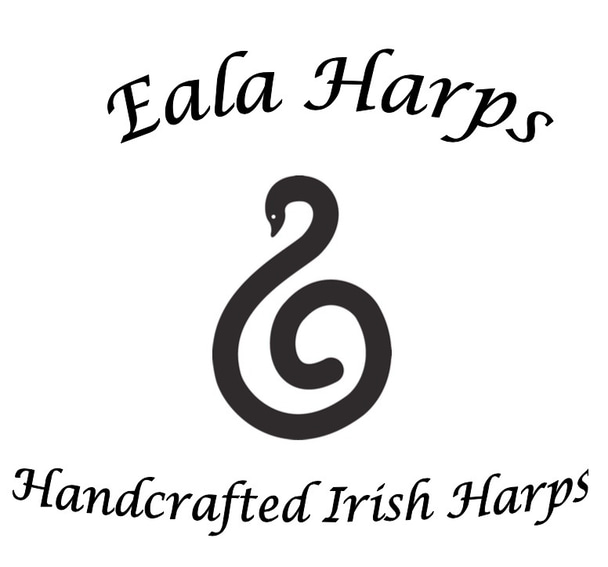Eala Harps at Expo Osaka
Eala Harps is delighted to be part of the Irish Pavillion at EXPO, Osaka, Japan. The theme of the Irish Pavillion is 'Creativity Connects People', and the Irish Pavillion showcases Ireland's creativity in craft, textile literature and of course music.
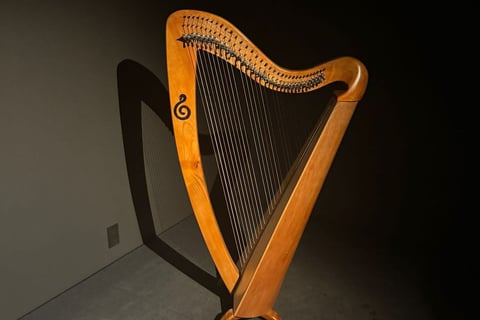

Bringing it all back home
Dan Quinn was a pioneer in harp-making in Dublin. A native of Pearse Street he started making Irish lever harps in the late 1960's. He was the harp maker of choice as all the upcoming generation of harpers bought instruments from him. His model was called the Bolger model, inspired by Mercedes Bolger Garvey.
I was handed a very badly damaged Quinn harp from 1972 several years ago. It sat in the attic of my workshop until recently when I set about restoring it. Interestingly, some grandchildren of Dan Quinn had seen a previous restoration of one of his harps on my Facebook page and contacted me. In time, when the restoration was complete I contacted his granddaughter. She contacted his grandson Denis who collected the harp this week. He had many stories about Dan, including why he wrote the name of John Quinn inside each harp, as a way to remember a family member who died young. Half a century of history in one photo!
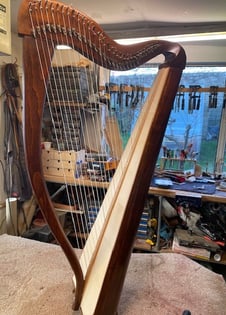

Spending a week in the company of a Wire Strung Irish harp!
As a harp maker I don't often interact with wire strung Irish harps or the Historical Harp society. This week was an exception.
A 19th Century wire strung harp arrived in for re-stringing. This was based on the revolutionary John Egan harp from the 1820's.This was no doubt a copy, with a 5 stave back , as opposed to Egan's which had a round back.
What intrigued me most was the soundboard , made of spruce.I had the impression that all wire-strung harps had a soundboard of willow or similar. It transpires that Egan designed this model for the tradition bearers of the ancient way of playing.
Having no expertise in this area, I contacted Simon Chadwick in Armagh and arranged a visit.
A day that will live long in my memory. Simon had never come across this copy of Egan before and was delighted to measure it and assess. We both concluded that this harp would not take the tension a fully tuned harp, but the owner was interested in getting it strung up properly to restore the integrity of the harp visually.
Because of woodworm and structural repairs we couldn't hear the sound of this masterpiece.
However, Sylvia Crawford was also there and has just received a new copy of the Egan 37.
Sylvia has also spent years trying to re learn the ancient methodology for playing the wire strung harp. She kindly played for me on her new wire strung harp, and I have to say the sound and experience was breath taking. The resonance, harmonics and overtones penetrated straight through my body. Previously I had heard wire strung harps, but the spruce soundboard is the game changer , in terms of projection and sound scape.
Simon took a series of photos which I post here, with his permission.
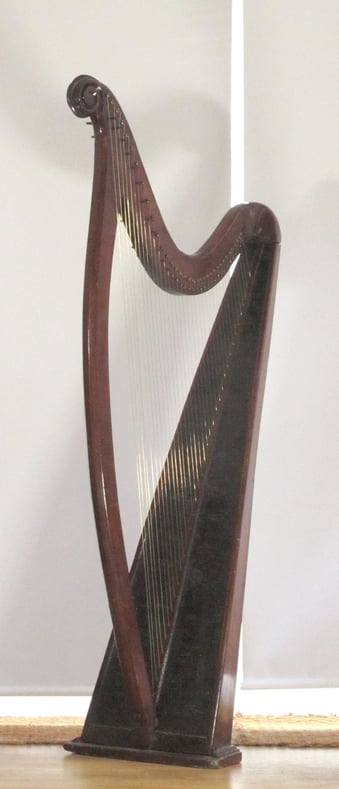


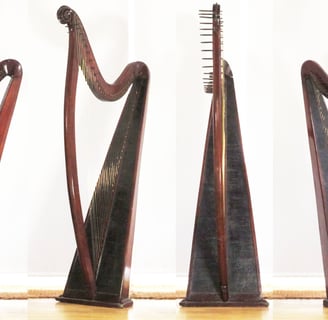
Craftsmanship
Custom Irish lever harps for traditional and classical players.
www.ealaharps.ie
harptomas@gmail.com
© 2024. All rights reserved.
